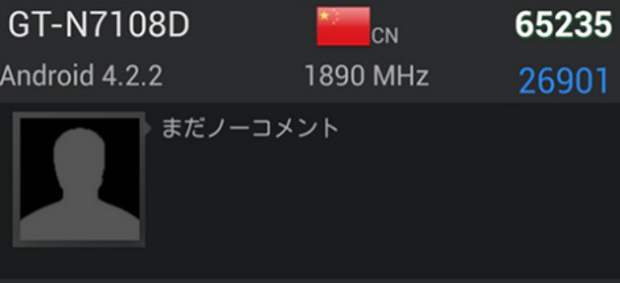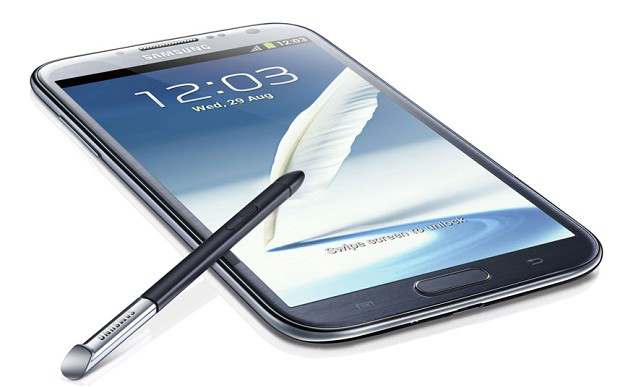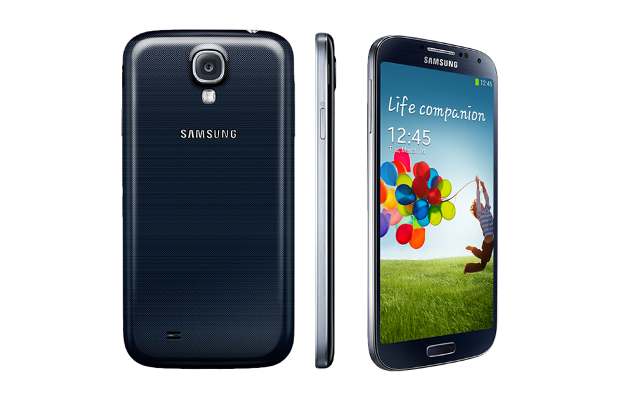The Story of how the tech Korien giants Samsung came up facing many difficulties.
On the
stage at the Odeon Leicester Square, Prince Charles is handing out awards from
his charity, The Prince’s Trust, to dozens of young people who turned their
lives around in the most challenging circumstances. Behind him, interspersed
with the fleur de lis of the royal charity logo is not a great British brand
but the blue ellipse of South Korea’s Samsung.
For a
technology giant built on selling millions of televisions, washing machines,
mobile phones and more, the regal setting is a long way from its roots selling
noodles in a provincial peninsula town.
Samsung
— the name means three stars — was founded in 1938, but it wasn’t until 1993
that the company started on the road to turn itself into the global
conglomerate it has now become.
While
Sony now makes most of its money from selling insurance and Panasonic makes a
hefty annual loss and wants to reinvent itself as a green giant, Samsung is
building its success on making the gadgets that are reshaping the world.
It’s
not bad for a family business that is just three generations old. It has grown
to such a size that it forms a key part of the whole growth strategy for South
Korea.
The
company continues to power ahead. It estimates that profits announced this
Friday will be more than £5bn. More data are downloaded via Samsung mobile
phones and tablets than those made by Apple, and it is the only major mobile
phone manufacturer using Google’s operating system to make a profit.
But
whatever the figures, the business faces two major hurdles: the challenge it
set itself to dominate every major field in which it operates, and that the
markets it has entered are approaching saturation point.
Although
much of the talk may be about Apple’s falling share price, Samsung’s too has
dropped by almost a quarter this year. Two thirds of Americans own a
smartphone, most of them Apple. As the mobile market becomes more focused on
upgrades, and even televisions start to rely on software rather than hardware,
Samsung’s challenge is to grow where it can and also – more difficultly – to
maintain its position as number one everywhere.
The
company started out as a small but prosperous grocers, trading a mixed bag of
goods including those noodles. It was only after the Korean War that it
diversified, and it was not until 1960 that it entered the electronics market
that was to make it a global player.
Like
Sony, Panasonic and its other rivals, it was the advent of television and
consumer electronics that sparked its expansion. And like its Japanese rivals
it built its fortunes on a huge and diverse range of interests.
From
construction to department stores and from paper to semi-conductors, Samsung
was once the model of a vast conglomerate, whose focus was difficult to define
but whose brand in its native South Korea was ubiquitous.
To a
great extent, that is still the case. The most direct descendant of the
original Samsung is not the TV and tablets behemoth, but the construction arm.
Today, Samsung is still defined by “Korean-ness” in a way that Sony is not
defined by coming from Japan. But while it may have built the Petronas Towers
in Malaysia, Taipei 101 and the Burj Khalifa in the UAE – the three tallest
towers in the world – the company is focusing its expansion plans more tightly
than ever on a digital future.
That
transformation was prompted by what is known in company lore as the Frankfurt
Declaration. This was not so much a declaration as an exhaustive analysis, a
three-day speech made in Frankfurt in 1993 by chairman Lee Kun Hee. Prompted by
a world tour Lee made of Samsung’s businesses, both in shops and factories, it
set out to define the company that Samsung could become, and it stated
explicitly the ambition to dominate every market from televisions to
telephones.
This
has been achieved. None of the group’s ambitions can be said to be
significantly off track. Lee is still in charge.
Frankfurt,
however, has taken on greater significance. It defines what Samsung’s employees
think the company means, and what they think it means to work for the company.
Every
new Samsung employee is taken to visit a model of the conference room, which
includes the original paintings and décor bought from the original suite in the
Falkenstein Grand Kempinski Hotel.
On that
pilgrimage, Samsung employees walk past signs saying, among other things, “We
will devote our human resources and technology to create superior products and
services, thereby contributing to a better global society”.
A
snappier one sums up Samsung’s attitude rather better: “Go! Go! Go!” That
certainly reflects the corporation’s approach. While some companies make three
models, Samsung has tried big phones, tiny phones, cheap phones and expensive
phones. Some of them stick; others are quickly dumped.
Lee may
not have the reputation of Steve Jobs, but within Samsung he is treated,
arguably, with even more reverence than the Apple founder.
The
company does not offer Lee to the media, preferring to use the new co-chief
executive, JK Shin, to make announcements on new products which are, in the
main, compered by a star of TV or Broadway.
There
have been some mis-steps. Launching the Galaxy S4 mobile phone in New York
earlier this year, the company was criticised for a show that was an
extraordinary pastiche of theatre and musical, with jokes that sailed over the
heads of its geek-heavy media audience and led to accusations of sexism. It was
an attempt to inject “personality” into a brand defined by its products.
Indeed,
Samsung is acutely aware of its failings. It is renowned for analysing every
word of feedback from the media and paying close attention to its fans and
critics on social media. It made the transition from a manufacturer of cheap
televisions to a global player in less than a decade. Many of its staff have
been there long enough to remember what the place used to feel like. Lee
certainly has, and his son, Lee Jae Yong, is vice-chairman and widely tipped to
take over.
For a
company that made $179bn in revenues last year and employs some 400,000 people,
that sense of history is a powerful force. Sources in the company admit that it
is a hard taskmaster. Working hours are as long as any company on the
peninsula; silos are as rigid as any, too.
If you
work on washing machines, you must own a Samsung phone, but it is likely you’ll
know no more about it than any customer.
As
Samsung’s products increasingly need to talk to each other, not least so that
Samsung can build brand loyalty, those structures will become more challenging.
The Korean cliché of workers never being allowed to leave before their boss and
consequently sneaking off for an afternoon nap in their cars may have to change
too, or the business might be stretched to breaking point.
When
Lee made his three-day speech, he said he wanted Samsung to be a global player
by the year 2000. He told managers to “change everything but your wife and
children”.
The
principles of what Samsung came to call “New Management” are neither
revolutionary nor novel. Lee also adorned the business with a commitment to
quality that culminated, in 1995, with a bonfire of 150,000 sub-par mobile
phones.
Today
the plan, it seems, is to continue the relentless expansion. Critics of the
company say it is built not on innovation but on copying other companies, not
least Apple, and on enormous marketing budgets and tiny margins.
Mobile
phone retailers say the pressure to sell Samsung is huge and that the pressure
leads to a momentum that gains a force of its own. Market dominance forces out
competitors, even when they’re the size of Nokia, HTC and BlackBerry.
Whether
Apple copied Samsung or vice versa, two things are certain: courts around the
world have swung both ways, but it is Samsung which benefited from being seen
as such a threat to Apple that the iPhone maker felt it needed to sue.
Now,
things seem to be edging toward an uneasy truce, and certainly Samsung
continues to manufacture millions of Apple’s chips. Even if Apple wanted to
sever its links with its great rival, it’s testament to Samsung’s market
dominance that it would be difficult.
One
Samsung source said this year that the company’s challenge was “how we spend
less money on advertising”. As the company focuses on larger mobile devices,
tablets, a new kind of PC and making all its televisions “Smart TVs”, it is
increasingly commissioning adverts that are not afraid to mock the “fanboys”
who are loyal to Apple even regardless of the product.
And it
is not afraid, either, to admit journalists into its Korean inner sanctums. Where
the company was largely hidden from view, it has recently run trips to show the
media how extraordinary its white goods arm is, or how its photography research
is more advanced than Sony’s or Nikon.
The aim
is straightforward: global domination in every sphere, and quietly continuing
to build the buildings and towers in which it sits, too. Perhaps most
remarkable is not how quickly this has happened or even how thoroughly – it is
that Samsung remains a business built on its products, rather than a brand with
which consumers claim to have a profound emotional connection.
Making
of a tech titan
1938 Founded by Lee Byung-Chull,
Samsung deals in groceries
1948 Investment from the Hyosung
Group is the first step towards serious expansion
1970 Produces first mainstream TV,
the black-and-white P-3202 with Sanyo
1976 Samsung makes one millionth TV,
but stays budget manufacturer
1979 Expands into domestic
appliances
1983 Produces its first computers
1992 The first mobile phone system
rolls off production line
1992 Becomes largest producer of
memory chips
1993 First DVD recorder produced, as
it increases the size of its consumer electronics division
2010 Builds the Burj Khalifa tower,
the world’s tallest building
2012 Becomes the world’s largest
mobile phone maker overtaking Nokia
VIA THE Telegraph

















